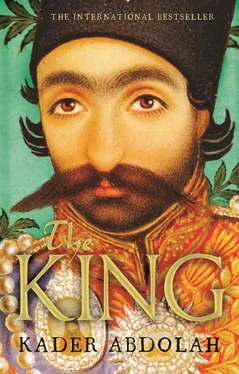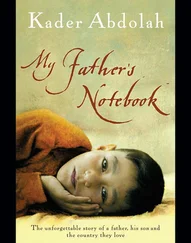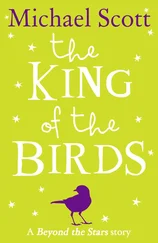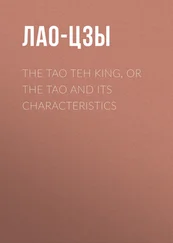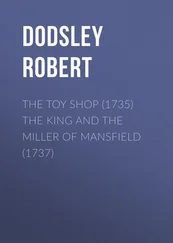In the past people sought sanctuary in the holy places and the homes of the ayatollahs, but this was the first time they had done so in a telegraph building. All Eyn ed-Dowleh could do was have the building surrounded. Then he rode to the palace to inform the shah.
It was already dark, and the officers around the telegraph building had heard nothing from Eyn ed-Dowleh. Apparently the shah had also been overwhelmed by the unexpected twist in the merchants’ protest. The atmosphere inside the telegraph building was one of victory. The merchants sent a series of long telegrams to the all bazaars of the country to explain what was going on in Tehran. They signed their telegrams with new slogans.
That same evening the telegraph of the British embassy began to chatter. It was a message to the ambassador. Edward Granville Browne read it aloud to him. ‘This is unbelievable. They’ve made their demands public. They want a parliament, a court of justice and a constitution, and they’ve asked England to support them in their struggle.’
‘I don’t know whether this is such a wise move,’ said the ambassador. ‘I would have preferred to have spoken with them first. I’m afraid it’s all going to get out of hand.’
‘Maybe, but maybe not. Both the shah and his opponents know how the game is played. The new element is that they’re trying to get England involved in their uprising.’
‘It’s a complicated business. I’ve explained it to London and we find ourselves in a very difficult situation.’
The shah received the same message by telegram. He was about to put it on the stack of unread letters when he noticed the names of the merchants. The shock was profound. He gave Eyn ed-Dowleh the following orders: ‘Cut the telegraph cables running out of Tehran to end their contact with the outside world. Don’t let anyone in. They’ll come out begging for water and food.’
News of the occupation of the telegraph building made its way throughout the city. People came by the hundreds to cheer the merchants on. Some tried throwing food over the fences, but whoever did was arrested and beaten by the guards. The merchants in the building cried, ‘Majles! Edalat-khaneh! Qanun!’
The crowds cried back, ‘ Ma hameh ba ham hastim , we’re with you, we’re all in this together.’ Despite the strict surveillance the merchants did manage to receive provisions. When their superiors weren’t looking some of the officers let the people pass jugs of water and food in to the confined occupiers.
Three days passed, but nothing happened.
‘ Ya marg, ya qanun , death or the constitution!’ The merchants refused to budge. The crowds responded to this uncompromising rallying cry by taking it over. It resounded in every quarter of the city.
In the evening the shah’s wives grabbed their binoculars and climbed up on the roof. They couldn’t make out the people very clearly, but they did see their torches and movements and they heard their shouts: ‘Qanun! Qanun! Qanun!’
The cries triggered something in the women of the harem. They didn’t understand what ‘qanun’ actually meant or what the advantages of a ‘qanun’ would be for them, but they hummed ‘qanun, qanun, qanun’ over and over, and by repeating this strange word they felt a new kind of joy fill their bodies.
The situation seemed hopeless. The shah did not want to use violence and the demonstrators did not want to leave the building. The British ambassador had been advised by London to follow the developments and take no initiative, but to keep all the lines of communication open. London had concluded that the shah could not win this fight, which is why the ambassador had decided that if the worst came to the worst he would give the demonstrators a helping hand.
Jamal Khan and Ayatollah Tabatabai did everything they could to bring the great ayatollahs of Qom to Tehran, hoping that their arrival would signify a breakthrough. When evening came three coaches carrying nine ayatollahs reached the city. People cried, ‘ Khush amadid, khush amadid. Salalah ala Muhammad salam bar Muhammad . Welcome, and salam to the descendants of the Prophet Muhammad.’
The officers at Telegraph Square prevented the coaches from going any further. The weary ayatollahs got out and Ayatollah Tabatabai welcomed them. The ayatollahs walked to the telegraph building, but none of the officers even considered stopping them. They knew that if they did anything wrong they would have the crowds to contend with. So they stepped aside and bowed their heads in silence.
When the people in the telegraph building saw the ayatollahs they were deeply moved and cried out, ‘Ya marg, ya qanun, death or the constitution!’
The oldest ayatollah, whose name was Behbahani, held his walking stick in the air and moved with the rhythm of the slogan. The other ayatollahs copied his gesture: ‘Qanun! Qanun! Qanun! Constitution! Constitution! Constitution!’ Then the exhausted ayatollahs went to the house of Ayatollah Tabatabai to claim sanctuary out of protest.
It wasn’t long before dozens of other imams began to follow their lead. The British embassy watched everything, wrote it all down and sent daily telegrams to London. They prepared themselves for any eventuality.
When the clerics of Qom came to claim sanctuary it was a shot in the arm for the merchants in the telegraph building, but it did not change the situation. The shah was profoundly unimpressed.
Jamal Khan held a meeting every night to discuss how to help the merchants and the ayatollahs move on to the next phase of their collaboration. A few nights after the arrival of the ayatollahs the committee made an important decision. They would attack the notorious Tehran prison and free their comrades.
The next day hundreds of demonstrators removed the chains from the prisoners being kept in the damp dungeons. Mirza Reza, who was emaciated and weak, rose to his feet like a warrior when he heard the voice of Jamal Khan in the dark corridor leading to his cell. Four prisoners lost their lives in the exchange of gunfire between the guards and the demonstrators. If the guards had wanted to they could have killed dozens more, but it was obvious that some of the guards sympathised with the action.
When news of the storming of the prison reached the telegraph building, the crowd attacked the police. Instead of withdrawing, Eyn ed-Dowleh decided to retaliate. He ordered his officers to smash down the door of the telegraph office using a large, heavy beam. The officers then beat the merchants with their rifle butts. But the merchants put up a good fight, crying, ‘Ya marg, ya qanun, death or the constitution!’ all the while.
A number of people turned on Eyn ed-Dowleh and completely surrounded him. One young imam leapt forward and grabbed the reins of Eyn ed-Dowleh’s horse. The animal reared up and whinnied. Eyn ed-Dowleh aimed his rifle at the imam, but the imam grabbed his left leg and pulled him from his saddle so that he fell flat on the ground with his rifle and sword. The young imam picked up the rifle and was about to shoot Eyn ed-Dowleh but was fired on himself by a nearby sergeant.
Edward Granville Browne was watching it all from the roof of the British residence. In the chaos of trigger-happy soldiers and demonstrators who were fighting for their lives with sticks and stones, Jamal Khan ran through the crowd to the British embassy. He shouted up to the roof: ‘Edward Granville Browne, listen to me! Many people are about to be killed. England must assume its responsibility. The demonstrators are being held captive. Open the embassy gate, let everyone in!’
At first Edward Granville Browne did not understand. When he finally grasped the situation he shouted back, ‘I shall warn the ambassador!’
Читать дальше
